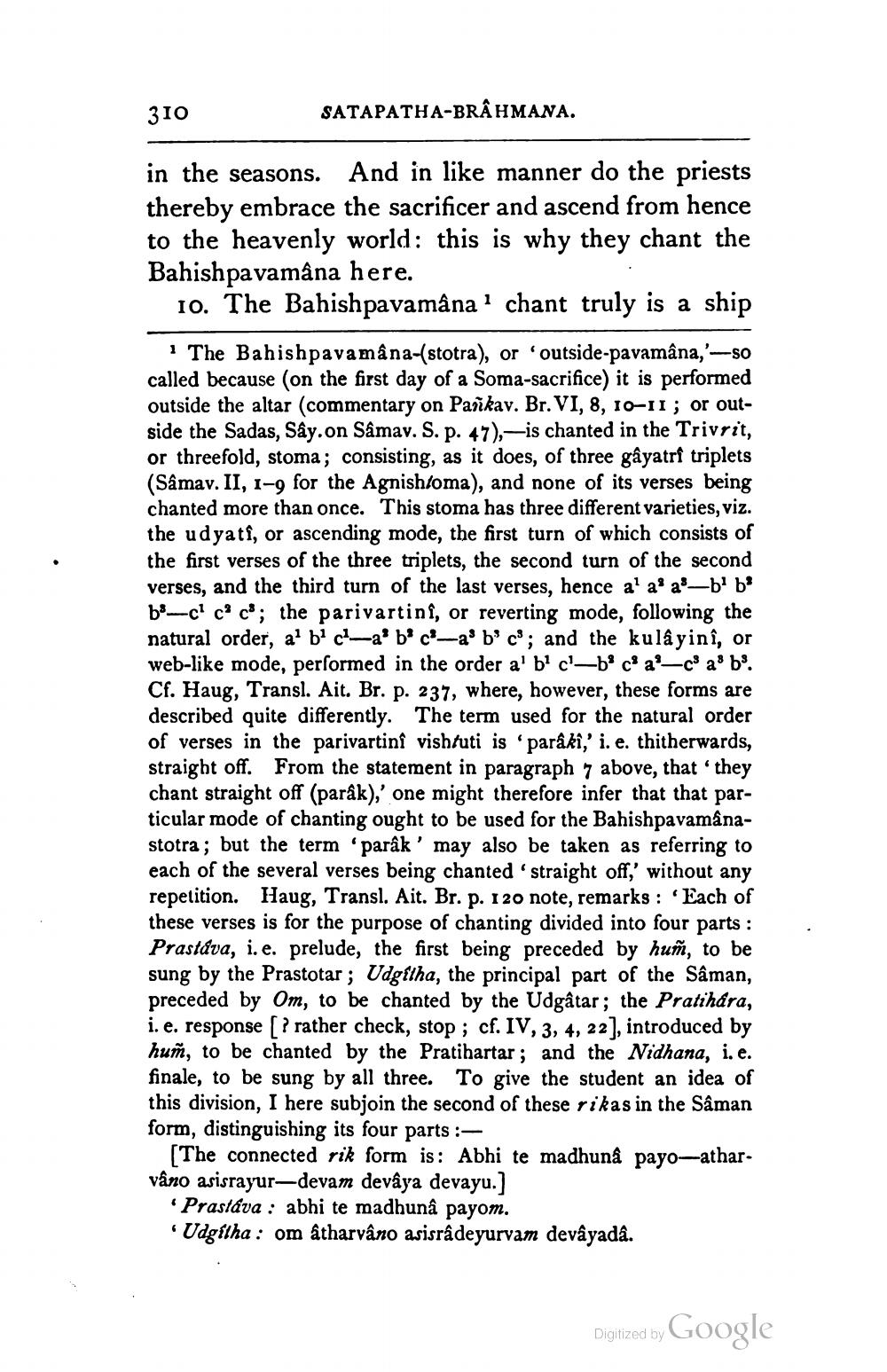________________
310
SATAPATHA-BRÂHMANA.
in the seasons. And in like manner do the priests thereby embrace the sacrificer and ascend from hence to the heavenly world: this is why they chant the Bahishpavamâna here.
10. The Bahishpavamâna' chant truly is a ship
1 The Bahishpavamâna-(stotra), or outside-pavamâna,'--SO called because (on the first day of a Soma-sacrifice) it is performed outside the altar (commentary on Parkav. Br. VI, 8, 10-II; or outside the Sadas, Sây.on Sâmav. S. p. 47),-is chanted in the Trivrit, or threefold, stoma; consisting, as it does, of three gâyatrf triplets (Sâmav. II, 1-9 for the Agnishloma), and none of its verses being chanted more than once. This stoma has three different varieties, viz. the udyatî, or ascending mode, the first turn of which consists of the first verses of the three triplets, the second turn of the second verses, and the third turn of the last verses, hence al al a b ' b b-c c c®; the parivartinî, or reverting mode, following the natural order, a? bic-a'b' c-a'b' c; and the kula yini, or web-like mode, performed in the order al bic-b8ca-ca' be. Cf. Haug, Transl. Ait. Br. p. 237, where, however, these forms are described quite differently. The term used for the natural order of verses in the parivartini vishtuti is 'paråki,' i. e. thitherwards, straight off. From the statement in paragraph 7 above, that they chant straight off (parâk),' one might therefore infer that that particular mode of chanting ought to be used for the Bahishpavamânastotra; but the term 'parâk' may also be taken as referring to each of the several verses being chanted 'straight off' without any repetition. Haug, Transl. Ait. Br. p. I 20 note, remarks : Each of these verses is for the purpose of chanting divided into four parts : Prastáva, i.e. prelude, the first being preceded by huñ, to be sung by the Prastotar; Udgitha, the principal part of the Sâman, preceded by Om, to be chanted by the Udgâtar; the Pratihára, i. e. response [? rather check, stop ; cf. IV, 3, 4, 22], introduced by huñ, to be chanted by the Pratihartar; and the Nidhana, i.e. finale, to be sung by all three. To give the student an idea of this division, I here subjoin the second of these rikas in the Sâman form, distinguishing its four parts :
[The connected rik form is: Abhi te madhunâ payo-athar. vâno asisrayur-devam devâya devayu.]
Prastava : abhi te madhunâ payom. Udgitha : om atharvâno asisradeyurvam devâyada.
Digitized by Google




